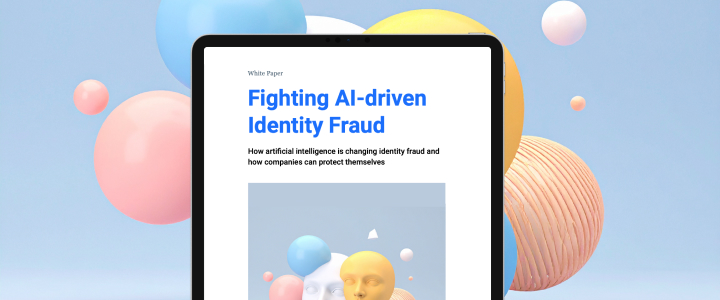Empowering innovation through digital trust
Recent surveys by KPMG, and the public debate, highlight a pervasive skepticism surrounding artificial intelligence (AI) and other technologies. 61 % of the respondents are wary about trusting artificial intelligence systems. Depending on the country the percentage of AI sceptics ranged as high as 84 % (Finland). The resulting slowdown of digital transformation projects and technology adoption begs the question: how can we gain and maintain digital trust?
Similarly, companies and government organizations face concerns of both, their external stakeholders, such as customers, business partners, and regulators, and their internal stakeholders, such as employees, risk and compliance functions or the board of directors about the risks related to their AI systems. Typically, the concerns are related to the fairness, accuracy, safety, security, privacy, and compliance of their AI endeavors. The consequences are delayed or even failed innovation projects, longer time to market, and a slow adoption of new technologies.
This skepticism is not related to AI technology only — and it is not a new phenomenon. For example, in recent years, the Swiss people voted against an Electronic Identity Law because the public didn't trust the technology and the way it was to be deployed and operated. Concerns related to privacy and transparency were intensely debated before and in the aftermath of the public vote. Is that lack of digital trust justified? One would think so, given the high number of issues reported regarding the reliability of digital systems, as well as the number of cybersecurity and privacy incidents that make the news in Switzerland and abroad.
What is digital trust?
In a recent report that KPMG wrote in collaboration with the WEF1, digital trust is defined as follows. Digital trust is the expectation by individuals that digital technologies and services — and the organizations providing them — will protect all stakeholders’ interests and uphold societal expectations and values. There are two key ingredients to digital trust: 1. Secure & safe technologies, resilient infrastructures Digital products and services must be based on a sound fundament, which ensures that data is kept confidential and cannot be manipulated; that products and services do not harm its users or the environment; and that products and services are resilient against disruptive events, including human errors, (cyber-) attacks, etc. 2. Responsible use As with any technology, be it a knife or a digital system, it can be used for good and bad. Hence, it is critical that digital products and services are provided under a governance that ensures users are served responsibly, i.e. ethically, transparently, and in good faith.
Why digital trust matters
If our bridges were built with the same quality as some of the digital products and services that are put in front of us users, we wouldn’t walk across them. They would look too rickety and unsafe. Unfortunately, digital tinkerers, who build these untrustworthy products and services, too often enjoy a competitive advantage as they seem to deliver the expected functionality and features at a lower price point and/or with a shorter time to market while taking short-cuts on safety, security, and other quality aspects. All too often, we consumers become aware of these short-cuts only when the equivalent to a collapsing bridge has occurred, typically accompanied by a communication of the responsible company or public entity stating that this incident comes as a surprise. Clearly, this is not a sustainable approach. Earning and maintaining the trust of customers, business partners, regulators, and the public will become increasingly important for the success of digital products and services and for the adoption of new technologies in general.
A differentiator for digital products and services “made in Switzerland”?
Trustworthiness should be treated as a quality attribute and can serve as a differentiator for products and services. Many successful Swiss companies across different industries have understood this and justify their premium price tag with it. However, the fact that a product or service is “Swiss made”, doesn’t necessarily mean that it is trustworthy. Particularly for digital products and services, more than enough cases that prove such an assumption wrong have made it into the media in the past. To earn and maintain the trust of users and benefit from it in a sustainable way, developers and providers of digital products and services should take an active approach:
Digital products and services should be developed with trustworthiness in mind from the design phase (“trustworthiness- by-design”), incorporating specific requirements for security, reliability, accountability, oversight, as well as ethical and responsible use.
Trustworthy digital products and services should be developed and operated through engagement and communication with stakeholders. Demonstrating adherence to these standards can be achieved by having products and services audited by knowledgeable, independent third parties. This may include compliance with standards and best practices in the form of certificates and SOC-2 attestations issued by trusted organizations.
Developers should hold their suppliers and business partner ecosystem to the same standards.
Education of buyers, procurement organizations, legislators, and the general public should be promoted. Trade associations may be able to play an important role here.
Our choices determine whether digital trust gets the attention it deserves
As buyers and consumers of digital products and services, our choices are critical to support and accelerate the transition to a more trustworthy digital environment. We must look under the hood to challenge providers and developers and make trustworthiness part of our requirements when procuring or subscribing to digital services and products. Often, we must be ready to pay an upfront premium for it, but the payback may come faster than expected in form of accelerated time-tomarket, smoother execution projects and less costs to managing incidents as demonstrated. In the end, it is the responsibility of all of us consumers to demand the transparency required to inform our choices. Let’s buy and consume services and products from those organizations and tech ecosystems that are able to demonstrate that they deserve our trust.





